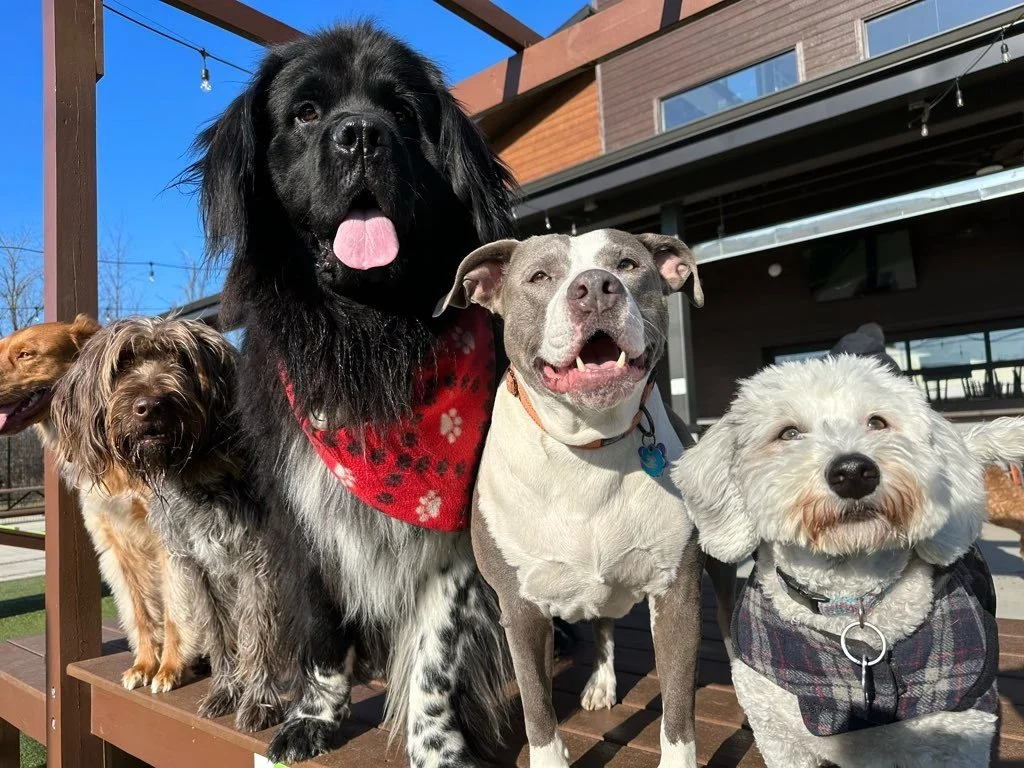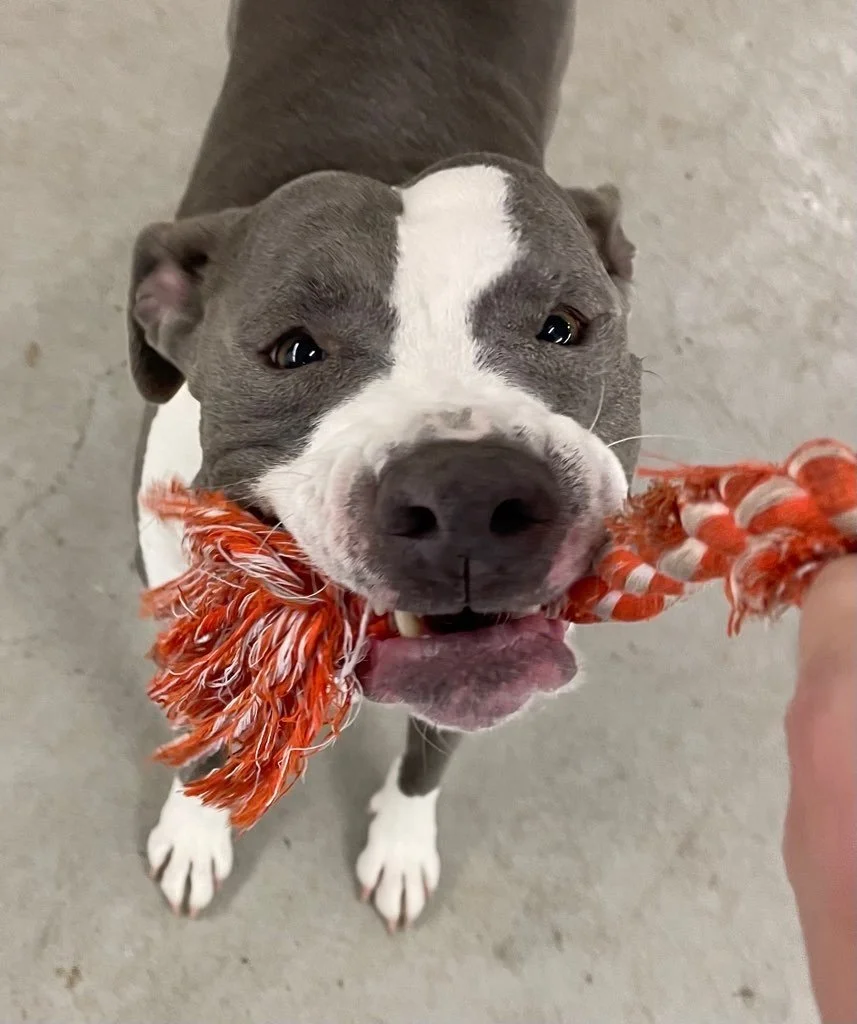Welcome back, dear Reader! It’s Marsha CPDT-KA, and this week, I'll be digging into the fascinating world of dog training, particularly the transformative power of choice-based methods. In recent years, a progressive approach to dog training has gained prominence, emphasizing the significance of giving dogs choices throughout the training process. This methodology, often labeled as "positive reinforcement" or "force-free" training, centers around respecting a dog's autonomy and offers a multitude of benefits for both our furry friends and us, their devoted owners. Continue reading as we explore why granting dogs the freedom to make choices during training is a pivotal aspect of canine education.
Positive Reinforcement
Positive reinforcement is a cornerstone of choice-based dog training because it focuses on nurturing a dog's good behavior rather than dwelling on their mistakes. When you reward your dog with treats, praise, or other forms of positive feedback immediately after they make a correct choice during training, you're effectively telling them, "You're on the right track!" This positive feedback creates a strong association between training and positive experiences in your dog's mind. As a result, they become more eager to engage in training sessions, as they anticipate the potential rewards and the joy of making their humans proud. Unlike punishment-based methods, which can lead to fear or anxiety, positive reinforcement builds trust and strengthens the bond between you and your dog. It fosters a cooperative attitude, making your dog not only willing but excited to learn new skills and behaviors.
Empowerment and Engagement
When dogs are granted the autonomy to make decisions within the training framework, they no longer view training as a mere series of commands but as an exciting opportunity to engage and cooperate with their owners. This newfound sense of control over their actions empowers them, fostering a genuine desire to participate. As a result, they become willing and enthusiastic learners, actively seeking to understand and respond to the cues provided. This eagerness translates into quicker and more effective training sessions, as dogs are not just complying with orders but actively thinking, problem-solving, and enjoying the process. In essence, choice-based training turns the dog-owner partnership into a collaborative effort where both parties share in the joy of learning and growing together.
Reduced Stress and Anxiety
When dogs are forced into rigid behaviors without any room for choice, they can experience heightened stress levels, manifesting as anxiety, fear, or even resistance. On the other hand, granting them the freedom to make choices within reasonable boundaries creates a nurturing environment where they feel safe and secure. They learn that they have a say in the training process and that their owners respect their comfort levels and preferences. This newfound sense of control translates into a more relaxed and confident demeanor, allowing dogs to approach training sessions with a positive mindset. By eliminating the fear of coercion, choice-based training promotes emotional well-being and trust, setting the stage for a happier and healthier relationship between dogs and their owners.
Improved Problem-Solving Skills
By granting dogs the freedom to make choices and encouraging them to think for themselves, we stimulate their cognitive abilities. This mental engagement not only enhances their overall intelligence but also fosters adaptability. Dogs become adept at assessing situations, weighing options, and choosing the most appropriate response. This cognitive development extends beyond training sessions and positively impacts their daily lives. They become better equipped to navigate various challenges, whether it's solving puzzles, finding hidden treats, or adapting to new environments. Choice-based training, with its focus on mental stimulation, transforms dogs into more capable and confident problem solvers, enriching their lives and strengthening the bond between them and their owners.
Better Communication
Choice-based training serves as a powerful conduit for enhancing communication between dogs and their handlers. In this approach, training sessions evolve into a dynamic call-and-response exchange, where both parties actively engage in understanding each other. Dogs learn not only to follow commands but also to convey their preferences and feelings through their choices. As a result, owners become more attuned to their dogs' unique cues and signals, creating a deeper level of understanding and empathy. This two-way communication builds a stronger and more cooperative relationship where trust and mutual respect are at the forefront. Dogs feel heard and acknowledged, fostering a sense of partnership rather than subservience. In turn, owners gain a more profound insight into their dogs' needs and desires, allowing for more effective training and a happier, harmonious bond between human and canine.
Respect for the Dog's Autonomy
Respecting a dog's autonomy is at the heart of choice-based training, and it signifies a significant shift in the way we interact with our canine companions. It acknowledges that dogs are not merely obedient beings but individuals with unique thoughts, feelings, and preferences. By allowing dogs to make choices, we demonstrate a profound understanding of their needs and grant them the dignity of autonomy. This approach embodies a more empathetic and humane perspective on training, prioritizing cooperation over dominance. It sends a clear message that we value our dogs as equal partners in the training process. This respectful approach not only nurtures a stronger sense of trust between dog and owner but also sets a positive example for the broader relationship, emphasizing empathy, respect, and mutual understanding in all aspects of their shared lives.
Increased Cooperation
When dogs realize they have a say in their training, they experience a newfound sense of control and autonomy. This assurance leads to a stronger trust in their owner's intentions, as they learn that their feelings and comfort are respected. As a result, dogs willingly engage in training sessions, knowing they can communicate their needs or uncertainties without fear of repercussions. This trust and willingness to participate facilitate quicker and more effective learning, as dogs are not only open to instruction but actively eager to engage in the training process. The partnership between dog and owner becomes a collaborative journey, where both parties work together to achieve training goals, fostering a harmonious and cooperative relationship built on a foundation of mutual trust and respect.
Adaptability to Different Situations
The adaptability cultivated through choice-based training is a remarkable asset for dogs in navigating the ever-changing world around them. These dogs, having been empowered to make decisions and think critically during their training, become more self-reliant problem solvers. Consequently, they are better prepared to handle unforeseen circumstances and changes in their environment. Instead of relying solely on strict commands, they draw upon their ability to assess situations and make informed choices. This adaptability not only reduces the stress and anxiety associated with unexpected situations but also enhances their overall quality of life. Whether it's encountering a new social situation, facing an unfamiliar environment, or responding to novel challenges, dogs trained with choice-based methods exhibit a greater capacity to adapt and thrive, all while maintaining their confidence and trust in their owners.
Incorporating choice-based training into your dog's education is not just a training method; it's a philosophy that promotes mutual respect and cooperation. By allowing your dog to make choices within established boundaries, you create an environment that enhances their learning experience and strengthens your bond. Remember that offering choices doesn't mean relinquishing control but rather empowering your furry friend to actively participate in their training journey. With a focus on positive reinforcement and respect for their autonomy, you can achieve desired behaviors while cultivating a joyful, confident, and willing canine companion. This approach not only transforms training into a positive and enjoyable experience for your dog but also deepens the connection between you and your loyal four-legged friend, making your shared journey through life all the more rewarding.








Discover the benefits and practical applications of choice-based dog training methods, also known as positive reinforcement or force-free training. Join us in exploring how giving your furry friend choices during training can lead to stronger skills and a more fulfilling and harmonious relationship for both you and your pup.